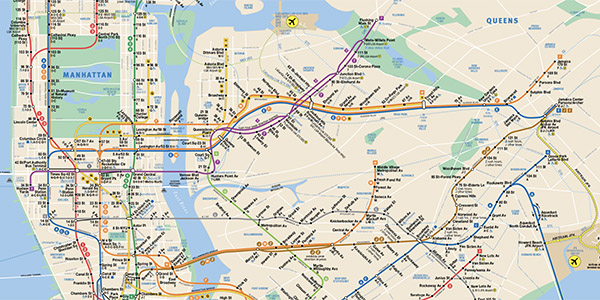Subways seeded the massive coronavirus epidemic in New York City
In a new working paper, Professor of Economics Jeffrey Harris writes that NYC's multi-tentacled subway system was a major disseminator — if not the principal transmission vehicle — of coronavirus infection.

detail, NYC subway and transporation map
Research and Perspectives for the Pandemic
Main Page | Healthcare | Economic Impacts
EXCERPT | WORKING PAPER | APRIL 13, 2020
"The near shutoff of subway ridership in Manhattan – down by over 90 percent at the end of March – correlates strongly with the substantial increase in the doubling time of new cases in this borough. Maps of subway station turnstile entries, superimposed upon zip code-level maps of reported coronavirus incidence, are strongly consistent with subway-facilitated disease propagation.
"Local train lines appear to have a higher propensity to transmit infection than express lines. Reciprocal seeding of infection appears to be the best explanation for the emergence of a single hotspot in Midtown West in Manhattan. Bus hubs may have served as secondary transmission routes out to the periphery of the city."
Excerpt from Prof Harris's working paper
Suggested links